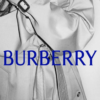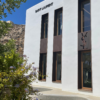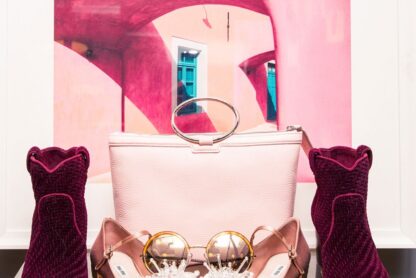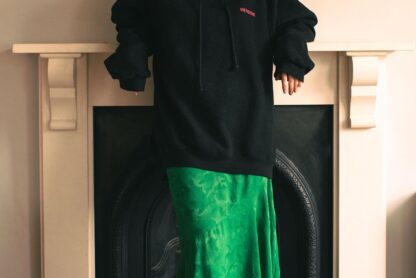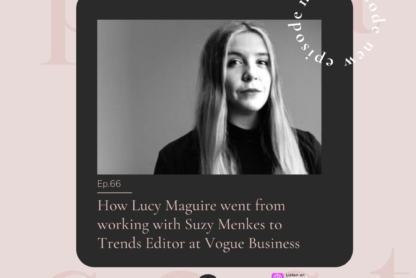Aurora is an Italian Girl who lives in London and works at Asos as Trade Marketing Assistant. I talked to her to know her career story and how she went from working in Architecture to the fashion industry. In her detailed answers, she explains what’s like working for a company that mixes fashion and technology, and shares also her interview experience.
What did you study?
After high school, I decided to study architecture because of my curiosity towards design and the creative industry; my dad is an architect and I think that had an influence on developing this interest. I was a very creative kid; when I turned five, my dream was to blow out candles on a 3D shortcrust pastry cake with the shape of a castle, decorated with Smarties, sugar sprinkles, cookies and chocolate… I had that in mind for a while but it was not easy to explain how exactly I wanted it, so I drew it on a piece of paper, picking colours and adding all details and my grandma made it!
After the Bachelor, I wanted to continue my studies in architecture in a Swiss university in the Canton of Ticino but my application got rejected and when I found it out I was already in London and very uncertain of what to do. In my head, that was the clear sign I had to change something. After working for five months in a pub, I started an internship in a London studio specialised in window design and in-store installation and I stayed there for eight months… At the same time, I applied for three different MAs I was interested in and in September 2014, I enrolled for the MA Innovation Management at Central Saint Martins.
Your first experiences were in architecture, how was the transition into the fashion industry?
One of the contemporary architect that interests me the most is Rem Koolhaas and he has collaborated with Miuccia Prada for many years. I have always been more interested in what he did with Prada than his big scale projects and at some point, I completely shifted my attention on Prada and her approach to fashion. Through Prada, I then discovered this field more and more, and beside the theory I soon got to know the fashion work environment when interning in the London studio I previously mentioned. Although I was not dealing with collections, I realised how fashion is so much faster than architecture and I loved it! I could see what I worked on with my team implemented in a few weeks’ time and that was great, it would never happen in architecture. However, after a few months working as retail designer I realised how brands sometimes care more about the budget they want to invest than the value or the meaning of the retail space. I don’t want to generalise too much as I think it does not work this way for all brands but oftentimes who decides does not think about the quality of the design, its meaning or ask for the designer’s opinion. For this reason, I decided I wanted to be on the other side (the brand side) and as a manager understand and listen to the creative teams because what they do is very significant… The meaning and the value of fashion itself comes from there. This is why I applied for a master in management in a fashion school.
Do you think it was more difficult for you to enter this industry since you did not have a background in fashion?
No, I do not think so. When you enter fashion, the more you bring with you the better.

How your designer experiences were considered during your first interviews with fashion companies?
Well, for my first employment to have a background in interior design or architecture was almost compulsory, I was there to help developing retail spaces. I had my second interview for the placement I did during the Master and Geraldine, the founder of the fashion trend forecasting and creative agency I worked for, was very keen on having an architectural designer at the studio since she is a fashion designer herself. When I had my interview at ASOS I had just graduated in Innovation Management and worked in an agency, so I would say that my background in architecture was not relevant at that stage.
Now you’re working in London, why did you move from Italy where architecture and fashion are two established industries?
As most of the people who come here, my reason number one was to learn English but also, I had never stayed outside the area I am from in Italy and felt I wanted to live abroad for a while; my boyfriend encouraged me a lot in doing it. London is a city that challenges you, pushes your limits and forces you to step out of your comfort zone. This happens because there is much competition and a lot going on in almost any field: fashion, music, art, innovation, communication, art direction, consultancy, finance, design, education… etc. But on the other hand, London also offers a lot of opportunities and it encourages individual growth; so you want to push yourself because you feel motivated and there is room for professional development. Besides that, I feel that here I can measure myself with the rest of the world; when you listen to stories that you were not told before or opinions that are not aligned with your thinking, you understand so many things you had not even thought before. I love the diversity in this city and because of it I have so much fun and I feel inspired all the time. I never get bored, it changes every day.
London has made me grow on a personal level and I have better developed professionally when my way of thinking has begun to change. In my opinion, work goes beyond using tools or being skilled, oftentimes what makes a difference among individuals in the work environment is the way they think and how a person see reality from different perspectives.
Italy is where I am from and I have the rest of my life to live there. I love the culture of my country: it is so beautiful, it features so much quality and I would not like to be from anywhere else. So, of course, I will go back and hopefully will work for an Italian brand!
What it’s like working at Asos, a big company that mixes fashion and technology?
The e-commerce sector is different from the physical retail, it is a constantly changing world; I feel it adjusts every day since it is growing exponentially. As I just said, when I passed from architecture to fashion I was very impressed by the speed of the latter but when I passed from physical to digital, I could not believe how an industry can be changing and improving so fast. What I like the most about ASOS is the constant transformation and how people look at what does not work as an opportunity to do better next. There is more flexibility in accepting mistakes but this also happens because changing the digital is less difficult I think. The other big difference is that you can measure everything and it is easier to reach objectives, pinpoint priorities, see opportunities and predict failure: you know your customer because you see how she/he approaches the shopping experience from the beginning to the end. However, what is challenging is the fact that you cannot just rely on data: to be on top of mind and loved by your customer it is important to be revolutionary, to surprise, to bring value on a long term base: this means having a proactive approach, all the time. If you become reactive, results can be positive in a short term but you are not relevant as a brand. I think ASOS is on top of mind because it stands for the diverse, it includes everyone and supports and incentivises the young generations to be brave and whoever they want to be. Quite a few brands in the UK have this purpose but not as many in Italy for example, where people still struggle to embrace diversity because they fear judgement. Many Italian customers give ASOS very good feedbacks for the variety of the products it offers to any kind of person: they like it because they feel included, regardless they are trendy, classy, edgy, sporty… etc. Connecting to this, a key characteristic people working at ASOS have is seeing diversity as something to support and promote all the time.
Your first role at Asos was Sizing Coordinator, what did you do?
Asos is internationally expanding and has to adapt to the needs of customers from all over the world… And sizing is one of those things that varies from country to country. As sizing coordinator my role was focused on defining the best sizing scales to be used for each clothing category in Italy and Spain.
While now you’re Trade Marketing Assistant, what do you do?
I work closely with Damaris, trade marketing manager for Italy and Spain. We collaborate with the global brand marketing team to locally implement brand marketing campaigns, propositions and trade plans. We also monitor performances in different channels (organic and paid) and develop brand and trade strategies to engage our customers in Italy and Spain. Our team is part of two teams, the marketing team and the country team. In the marketing team there are trade marketing teams (one for each market), the proposition marketing team and the brand marketing team. In the country team there are people from global trade, editorial, social media, digital marketing, finance, visual merchandising, trading insight… All looking after the same country (in our case one for Italy and one for Spain).
Another key characteristic of our team is to pinpoint market trends, understand how they will evolve and reflects on how to deliver key global projects on a locally relevant way. Also, we execute local partnerships to increase consideration and drive trade growth in the market.
What are your tips to prepare for a job interview in Fashion?How was your experience? Did you do any test or presentation?
I think the questions asked during the interview can be modelled by what is written on CV and cover letter, that initiates a conversation with the employer. Due to the big amount of people applying, I would firstly recommend to reflect on how to write an application that HR and line manager can notice and read with attention. They select depending on what hits their interest and ask about it during the interview. For this reason, I think CV and cover letter should say why you are interesting and different from others, how you can contribute to the development of the company/field with the role you are applying for and what your professional/personal objectives are. I believe it is good to keep it as short as possible, featuring the most relevant experiences at the top.
I have never done tests for applications but only presentations. At this phase of the process, the key factors are: firstly, a good understanding of purpose and mission of the organization so you set realistic priorities and objectives in the business case you present and show your employer you know the company; secondly, be creative and not afraid to present ideas that can be different from what the company does to reach objectives.
I would also recommend to tell the employer things you have done outside work that reflect your personality and your way of approaching situations; so it is important to know yourself. During interviews people tend to say they are organized and respect deadlines but there could be more relevant things to mention.
Lastly, the interview is a chat with someone that wants to know about you, so try not to be scared… No one knows you better than yourself.


